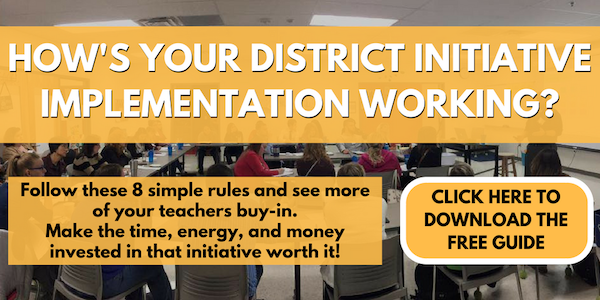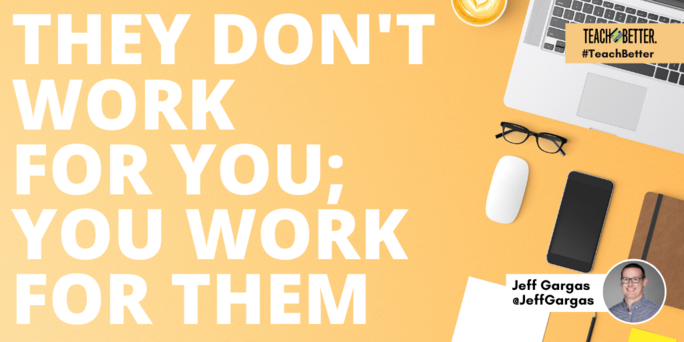TL;DR:
- You work for the people you lead. It is your job to find out what motivates them, what inspires them, and what brings them happiness.
- Leaders need to build trusting relationships with staff to meet their needs.
- Trusting your staff will give them the opportunity to grow organically.
“When you realize you work for your employees and not the other way around, things start to change” – Gary Vaynerchuk.
The first time I heard Gary talk about this, it hit me in the heart, and it hit me hard. Ever since my first job as a teenager, where I got promoted to management after just 3 weeks, I have been fortunate to be in a leadership/management/supervisor position in every company I’ve worked for. I’ve also started a lot of businesses that have employed a lot of people. Throughout the last 20 years, I’ve had hundreds of people work for me, ranging from teenagers to retirees re-entering the workforce, and everything in between.
I feel like I’ve always done well at leading people, and based on my career, I think I can say that with a decent level of certainty. But it wasn’t until a big shift in my mindset that I feel I really became a true leader of people.
In past roles, I’ve been a competent leader of different workforces, employees, and subordinates. But leading a workforce doesn’t always take good leadership. In many organizations, that can be accomplished simply by being good at managing operations.
But if you want to truly lead people, and lead them to do something meaningful, something powerful, you need to change the way you think of your role.
Leading will always be hard work. But when you realize you work for them, and that the reason you work for them is so they can change the lives of students, that hard work will be much easier to do. Click To TweetThe people you lead do not work for you. You work for them.
It is not their job to do what you say, or what you want, or what you command. It is your job to find out what motivates them, what inspires them, and what brings them happiness. Then, it’s your job to find how that fits into the goals of your organization, so you can give each one of your people exactly what they need to be the best they can be at their role in the mission.
Your teachers are not here to work for you. They are here to work for kids. You are there to work for them, to help them work for kids. If you think your role as a leader is something different, you’re wrong.
No “Itty-Bitty-Schmitties.”
Your goal is not to create additional versions of yourself. It is not to teach people to do things exactly like you do because “if you want something done right…” No, your goal is to bring out the best in others. Everything you do should be built on the foundation of providing support for your team, so they can be the very best versions of themselves. Any and every decision you make should be tested against the question: “Is this best for me, or best for them?”
Dave Schmittou (@daveschmittou) talks about this a lot. Early in his leadership journey, he thought he needed to essentially create a bunch of clones of himself, an army of “Itty-Bitty-Schmitties.” It was only after he realized his job was actually the opposite, that he became a truly great leader.
Think through the way you lead, the decisions you make, the goals you set. Are you focused on their success or your own?
Put in the work.
I feel like the importance of building culture has really exploded this year. I mean, it’s always been a thing we talk about. But the craziness of this pandemic and the challenges it has brought has really put a light on the fact that relationships really are the foundation of strong classrooms, buildings, and districts. Here’s the thing though, this has always been the case…always. Long before the pandemic hit, your teachers were dealing with stress, overwhelm, frustration, self-doubt, and trauma. They’ve always needed grace and understanding, and they’ve always needed you to know them and what they care about.
As we hopefully come out of this pandemic—whether that be in 6, 12, or even 24 months—I urge you to never let the focus of relationships go away. Get to know your people. Put in the work. Meet with them individually.
Yes, meet with every single one of them, individually. Put in the work.
Get to know them and what drives them. Let them know what you’re trying to create and why that is the goal. Make sure it aligns with their beliefs. Let them know you need them with you to achieve it. And find out what they need in order to pursue that goal with you. You may not be able to give them everything they want or need, but if you know what it is, you can work toward it. And if they know you know, and you’re transparent about what you can and can’t do, they’ll be more trusting, understanding, and patient with the progress.
Earn their trust, but trust them first.
One of my least favorite phrases is, “trust is earned, not given.”
I don’t believe this. I believe it hinders us more than it helps us. True, it could potentially protect us from trusting the wrong person, but it’s also likely to prevent us from seeing how truly amazing someone can be. I handle my trust the opposite way. You get my trust from day one. Now, don’t get me wrong, that trust can be lost, and it can be lost quickly. And once lost, it will be very hard to earn back. But if I am bringing you onto our team, or into my life, you have my trust. It is yours to keep or lose.
By doing this, but trusting the people on your team, you allow them to organically grow. When you are able to let them run with a project, present new ideas, and let their passions guide their actions (instead of their worry of what you might think, or what will get them in trouble, etc.), it is amazing what people are capable of.
[scroll down to keep reading]
It’s not easy.
None of this is easy. Changing your mindset, truly understanding all your people, and inherently trusting them, it’s all hard. It all takes work. It takes time, commitment, sacrifice, and a whole lot of energy. But, if you start with shifting the way you think about your role, and realizing the most important part of your job is to work for them, it actually becomes pretty simple.
Note: I said “simple” not “easy.”
Leading will always be hard work. But when you realize you work for them, and that the reason you work for them is so they can change the lives of students, that hard work will be much easier to do.
About Jeff Gargas
Jeff Gargas is the COO and co-founder of the Teach Better Team, and co-author of the Teach Better book. Prior to co-founding Teach Better Team, Jeff was the owner of ENI Multimedia, an online marketing firm, where he worked with entrepreneurs and small businesses, assisting them with web design, social media, content marketing, and brand awareness.
Prior to all of this, Jeff was an adjunctive professor at Kent State University and spent 10+ years in the music industry. He has spoken at conferences around the country, and has successfully promoted more than 500 events and launched 7 businesses in a variety of industries.
Jeff is passionate about music, and enjoys spending time with his family as often as possible. He is also a member of the Teach Better Speakers Network.



